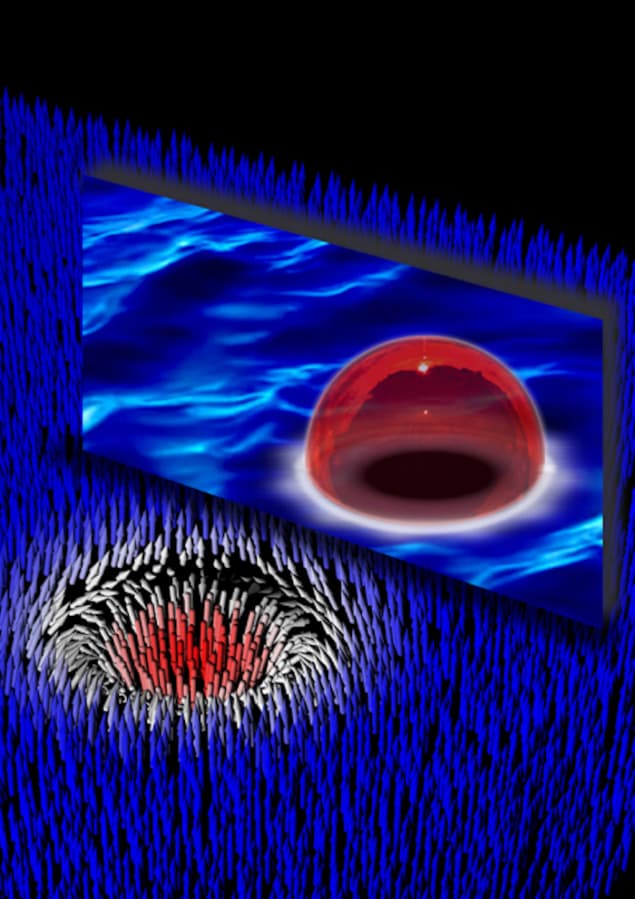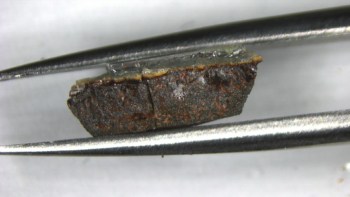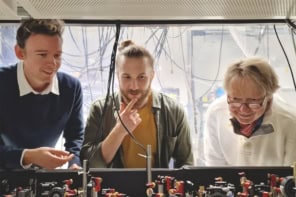
Physicists in Italy have observed a phenomenon known as false vacuum decay for the first time. The work, which was performed in a ferromagnetic superfluid, advances our understanding of ferromagnetic phase transitions and could shed more light on the stability of the early universe.
Some types of quantum systems have metastable (false) vacuum states as well as an absolute ground (true) vacuum state. These states represent different configurations of a quantum field, and the field can decay from the false vacuum state to the true one. When this happens, localized macroscopic regions of true vacuum – bubbles – form, surrounded by patches of false vacuum.
“Such a mechanism was originally discussed in the context of cosmology to study the stability of our universe, which can be in a stable or metastable configuration,” explains Gabriele Ferrari, a physicist at the University of Trento, Italy, who co-led the study together with Giacomo Lamporesi, Alessio Recati and Alessandro Zenesini of the Pitaevskii BEC Center, CNR-INO in Trento, Italy. “Indeed, vacuum decay is thought to play an important role in how space, time and matter was created in the Big Bang.”
Spontaneously generated bubbles
In the new work, the Pitaevskii BEC Center team used sodium atoms with a ferromagnetic ground state to explore false vacuum decay in a many-body quantum system. The team prepared this system by confining the atoms in an optical trap and cooling them to less than a microkelvin above absolute zero, where they form a ferromagnetic superfluid.
“We prepared the system in a metastable state in which the superfluid is polarized in the opposite direction with respect to the applied magnetic field,” explains Lamporesi. “After some time, we saw that the system spontaneously generated bubbles in macroscopic regions aligned with the magnetic field.”
Working with theorists at the University of Newcastle, UK, the team further showed that these bubbles were, in Recati’s words, “the first experimental evidence of the mechanism of false vacuum decay on a macroscopic quantum field”.
The researchers went on to measure the relationship between the bubbles’ average decay time and experimentally tuneable parameters such as the energy difference between true and false vacuum states (which changes with the applied magnetic field due to the Zeeman effect). They found that small variations lead to large changes in the decay time. “Our results show a very good agreement with the predictions of a field theory tunnelling (instanton) model, thus confirming the false vacuum decay origin of our system,” Lamporesi tells Physics World.
A technical achievement
The results of these experiments are described in Nature Physics, and Lamporesi stresses that obtaining them was technically challenging. Among other factors, the external magnetic field needs to be extremely stable to preserve the spin coherence of the superfluid system. To achieve the required stability, the team had to install a magnetic shield around the ultracold atomic gas – a tricky task, given that they needed to access the system with laser beams to manipulate the atoms.

Across the universe
While the researchers have analysed how long it takes for bubbles to form, this is just the first step. They now plan to investigate bubble dynamics in a controlled environment to understand the nature of bubble growth.
“Another important step will be to increase the effective dimensionality of the system from quasi-one-dimensional, as in the present study, where the theoretical analysis is easier, to two-dimensional, where interesting phenomena such as bubble collisions and merging appear,” Zenesini says. “Many features of bubble nucleation and dynamics were studied theoretically in the context of cosmology, where experiments are not yet accessible. They are highly relevant for the condensed-matter community too, however, since they are associated with quantum ferromagnetic dynamics that can be observed experimentally – as we have demonstrated in our work.”



